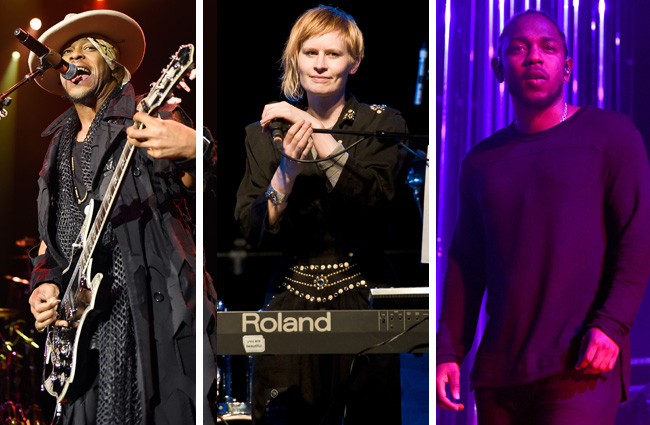
The storylines and subplots that accompanied all of the great music in 2015 added a nice level of meta-enjoyment to megafans and critics alike. Whether it was power/blatant opportunism at the heart of Drake’s neverending cosigns, pop music’s increasingly outward stance on feminism, or the raging debate over the whereabouts of SWISH, there was a lot to grasp onto if you were looking beyond the surface. But one narrative stood out above all (especially given the Grammys’ recent and implicit endorsement via their nominations): 2015 is the year that protest music finally came back to the mainstream.
Popular music as protest has a long and storied history in the United States starting with the troubadours and folkies of the ’50s and ‘60s, and the funk gods of the ‘70s, but had fallen fallow as a mode of expression following the explosion of rap protest anthems in the late ‘80s and early ‘90s. However, art in 2015 couldn’t help but imitate life, pushed along by the rise of one of the most visible protest movements since the Civil Rights era.
Following the Grammys’ example, 2015’s fixation with protest music actually kicked off with an album from late 2014. D’Angelo returned from self-imposed exile with Black Messiah, a swirling, soulful and vicious indictment of the United States for not changing for the better while he was away. You can draw a direct line between Black Messiah and There’s A Riot Goin’ On, but D’Angelo didn’t sound like a throwback. He crafted an album that drew heavily from the traditions of black music, but sounded exactly like a curated soundtrack to the images from Ferguson, Missouri that had beamed into countless homes last summer in crisp HD.
The year’s most visible and most lauded protest album followed in a similar vein, repurposing the history of black musical expression to create a thoroughly modern album. Kendrick Lamar’s To Pimp A Butterfly was both born of the protest movements of 2015 and helped shape them, giving the movement its very own anthem in the form of “Alright.” Lamar then underlined his intent by performing the song from atop a burned out police car with a tattered American flag in the background. All the odd nods to respectability politics couldn’t take that moment away.
Of course, there were protest movements beyond the umbrella of Black Lives Matter and, in turn, other groups had their own stripes of protest music. Victoria M. Ruiz and Joey L. DeFrancesco had too many uber-leftist ideals, gender equality screeds and bi-lingual attacks against racism for one band, spreading them over the saxophone skronk-punk of Downtown Boys and the roughed-up cumbia of Malportado Kids.
Gay and trans bands saw their profile increase right alongside that of their own issues. Whether it was the aggressively queer sound and stage show of PWR BTTM or the just plain aggressive d-beat of trans punks G.L.O.S.S., raging LGBT rock enjoyed the most visibility it had since the days of Pansy Division.
And while some female pop stars tiptoed around the idea of feminism, out in the indie-famous fringes, more and more women were wearing the label like armor. Jenny Hval challenged male egos with a shout of “What is soft dick rock?” Grimes’ Art Angels turned feminist ideas into stadium-shaking pop anthems, and Childbirth proved that even dedicated slackers give a f*ck about women’s rights.
2015 gave all these musicians plenty of reasons to be pissed off (continued encroachment on women’s and LGBT rights, a seemingly endless stream of state-sanctioned, questionable killings of black Americans), and for the first time in a long, long time, they used their platform on the main stage to say something about it.






